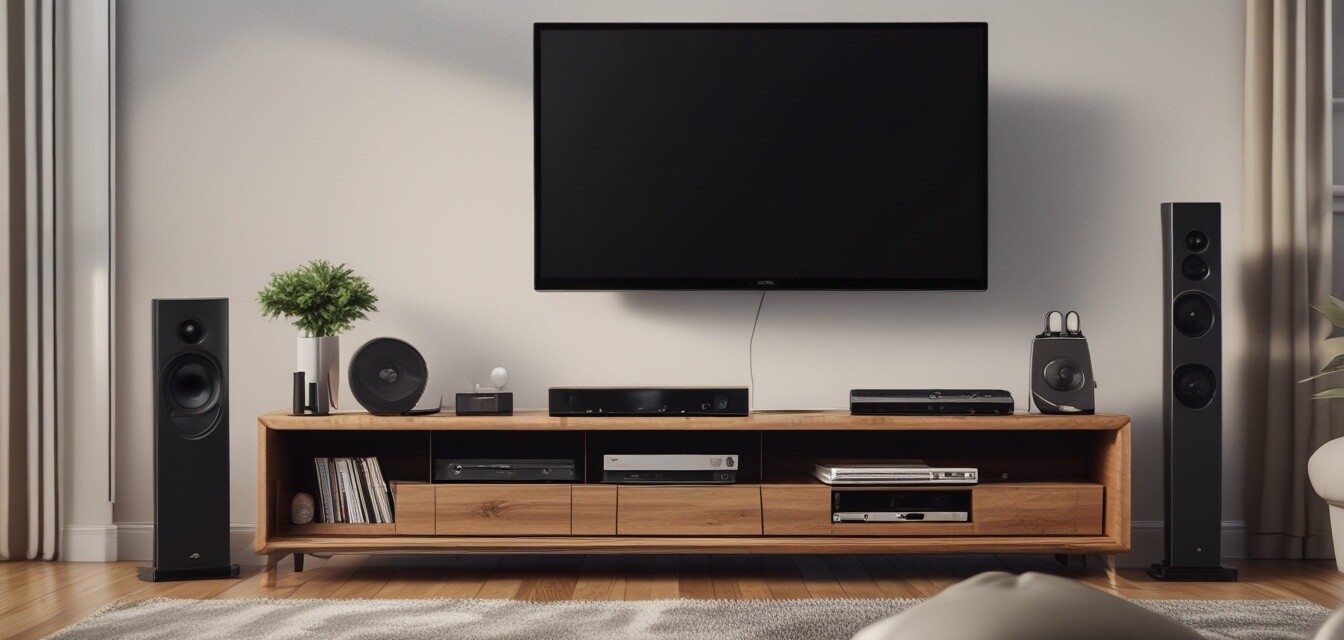
Beginner's Guide to Home Audio Setups
- Understand the different types of speakers available for your audio setup.
- Learn how to choose the right audio equipment based on your needs and preferences.
- Get tips on optimizing speaker placement for the best sound quality.
- Familiarize yourself with essential audio terminology.
- Explore budget options and features to look for when building your setup.
Creating your first home audio setup can be an exciting journey into the world of sound. Whether you want to immerse yourself in movies, enjoy music with friends, or simply enhance your daily audio experiences, having the right equipment is crucial. This guide will walk you through the essential components you'll need, how to install them, and tips for optimizing your audio experience.
Understanding audio equipment
Before diving into building your home audio setup, it's essential to understand the various types of audio equipment available:
| Type of Equipment | Description |
|---|---|
| Speakers | The main output device that converts electrical signals into sound. |
| Amplifiers | Enhances the audio signal from your devices to drive the speakers. |
| Receivers | Combines multiple audio sources and amplifies the signal to the speakers. |
| Subwoofers | Specializes in reproducing low-frequency sounds or bass. |
| Soundbars | A compact speaker system that provides enhanced audio for TVs. |
Choosing the right speakers
When selecting speakers, consider the following types:
- Bluetooth Speakers: Great for wireless connectivity and portability.
- Bookshelf Speakers: Ideal for smaller spaces, delivering quality sound.
- Outdoor Speakers: Designed to withstand weather conditions while providing great audio.
- Home Theater Systems: A collective setup to enhance the movie-watching experience at home.
- Portable Speakers: Battery-operated, designed for easy movement, these are perfect for outings.
- Soundbars: Compact and integrates easily with TV setups.
Essential gear for your setup
For a basic home audio setup, you’ll typically need the following gear:
| Gear | Function |
|---|---|
| Speakers | Main audio output. |
| Receiver/Amplifier | Drives speakers and connects multiple audio sources. |
| Cables | Connects different audio components. |
| Audio Sources | Devices like a smartphone, TV, or computer that provide audio. |
Speaker placement tips
The placement of your speakers significantly impacts sound quality. Here are some tips:
- Place speakers at ear level to create an optimal listening experience.
- Avoid placing speakers too close to walls, as this can distort sound.
- Use a symmetrical layout if you have multiple speakers for balanced audio.
- Experiment with different placements to find what sounds best for your room.
Common audio terminology
Familiarizing yourself with audio jargon can aid in understanding specifications and features:
- Wattage: Strength of the audio output, indicating volume capability.
- Frequency Response: Range of frequencies a speaker can reproduce, often noted in Hertz (Hz).
- Impedance: Measured in Ohms, indicating how much resistance a speaker has.
- Sensitivity: A measurement of how effectively a speaker converts power into sound.
Budget considerations
Your budget will greatly influence your selection of audio equipment. Here are a few budget tips:
- Set a reasonable budget based on your needs and research options within that range.
- Look for Bluetooth speakers if you're on a tight budget.
- Consider purchasing a home theater system as a comprehensive option that often offers good value.
- Explore sales and reviews of popular brands to find the best products for your budget.
Tips for beginners
- Start simple with a basic 2.1 or 5.1 setup and expand as you figure out your preferences.
- Prioritize sound quality over brand names.
- Test equipment in-store when possible, to ensure the sound meets your taste.
- Join online communities or forums to gather insights from seasoned audiophiles.
Pros
- Enjoy high-quality sound at home.
- Customizable setups based on personal preference.
- Enhances entertainment experiences for movies and music.
Cons
- Can become expensive depending on equipment choices.
- Requires basic knowledge of audio systems for optimal setup.
- May require additional space to accommodate larger systems.
Conclusion
Building a home audio setup is an exciting venture that can greatly enhance your audio experience. By understanding your needs, selecting the right equipment, and optimizing speaker placement, you can create an audio environment that suits your lifestyle and preferences. For more guidance on selecting specific audio products, check out our Buying Guides for further assistance in making informed decisions.